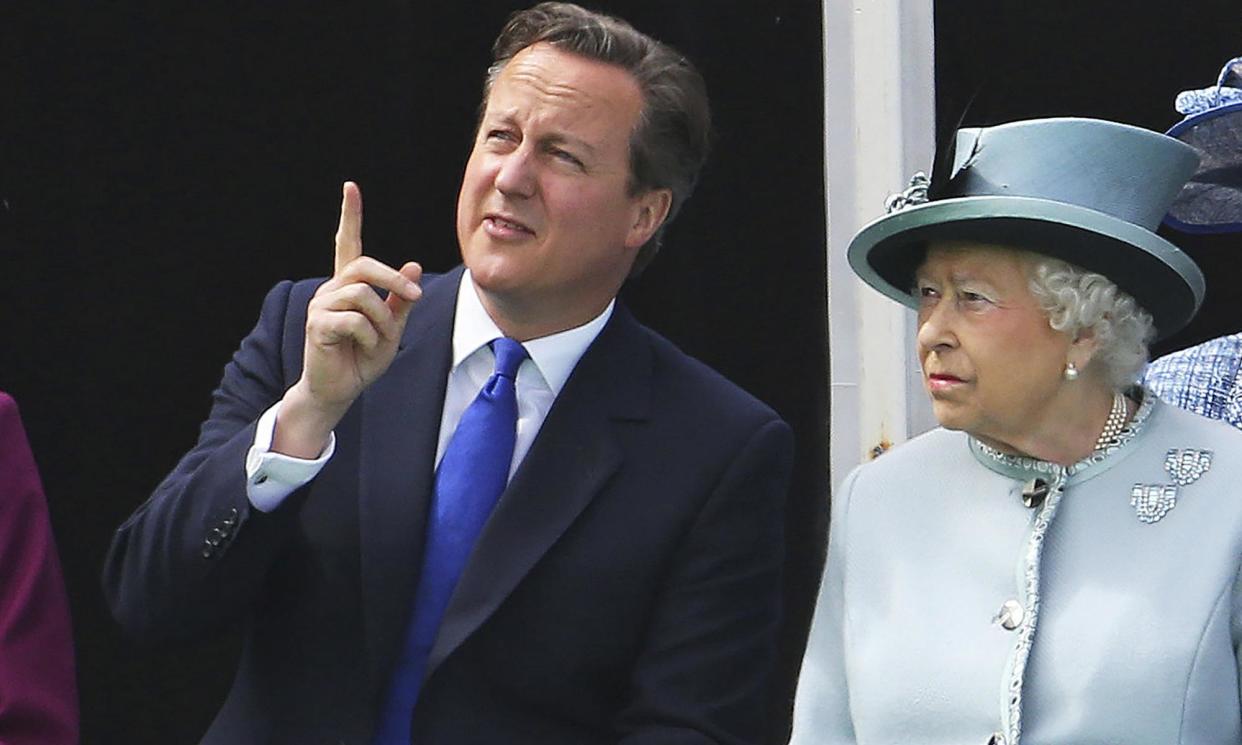A constitutional ‘pickle’: how Cameron’s election victory split Buckingham Palace and No 10

After the drama of election night, the more serene constitutional formalities will follow on Friday morning. In all probability it will be Sir Keir Starmer who will be driven down the Mall to be invited to form a government by the king.
The so-called “kissing of hands” normally passes off without a hitch. Most prime ministers are appointed at Buckingham Palace, though one notable exception was HH Asquith in 1908, who had to take a boat and train to Biarritz in France, where the king, Edward VII, was on holiday.
But the vagaries of our unwritten constitution leave room for behind-the scenes disagreements and tensions, even between the monarch and the government machine at these lofty ceremonial moments.
So it has been proved by the first ever insiders’ account of a tussle after the 2015 general election between the palace and the queen on one side, and government legal experts on the other.
Writing in the first edition of the Heywood Quarterly – a new free public policy journal established in honour of, and named after, the late former cabinet secretary Jeremy Heywood – Edward Young, the sovereign’s principal private secretary from 2017 to 2023, refers to the incident as a constitutional “pickle”.
He recalls how David Cameron’s general election victory in 2015, when he emerged with a majority of 11 after five years of coalition government with the Liberal Democrats, caught everyone rather by surprise.
Young writes that as the PM’s car set off from Downing Street to see the queen, there were very different views between the palace (supported by the queen) on one side, and the government legal team on the other, about what Cameron should say when he returned to No 10.
Related: No 10 officials discussed asking queen to talk to Boris Johnson about his behaviour
“Opinion was evenly divided,” writes Young, between those who thought he should say “I have just been to see her majesty the queen who has just invited me to form a majority Conservative government”, and those who believed that he should say he had been to see the queen “to inform her that I will form a majority Conservative government”.
Young does not reveal which side the palace and the lawyers were on, just that they disagreed. The tension seems to have been over whether Cameron was merely continuing as prime minister or assuming in effect a new role in charge of a majority government. If it was the former, then he would only need to inform the queen; if the latter, the queen would normally invite him to form a government.
“I am too diplomatic to say who held which position but time was short,” writes Young. “The PM’s convoy was speeding up the Mall. A solution had to be found. We found it by taking a leaf out of Agatha’s Christie’s book. We deployed an unarticulated ellipsis. Thus the PM’s words: I have just been to see her majesty the queen … and I will now form a majority Conservative government.”

 Yahoo News
Yahoo News 
